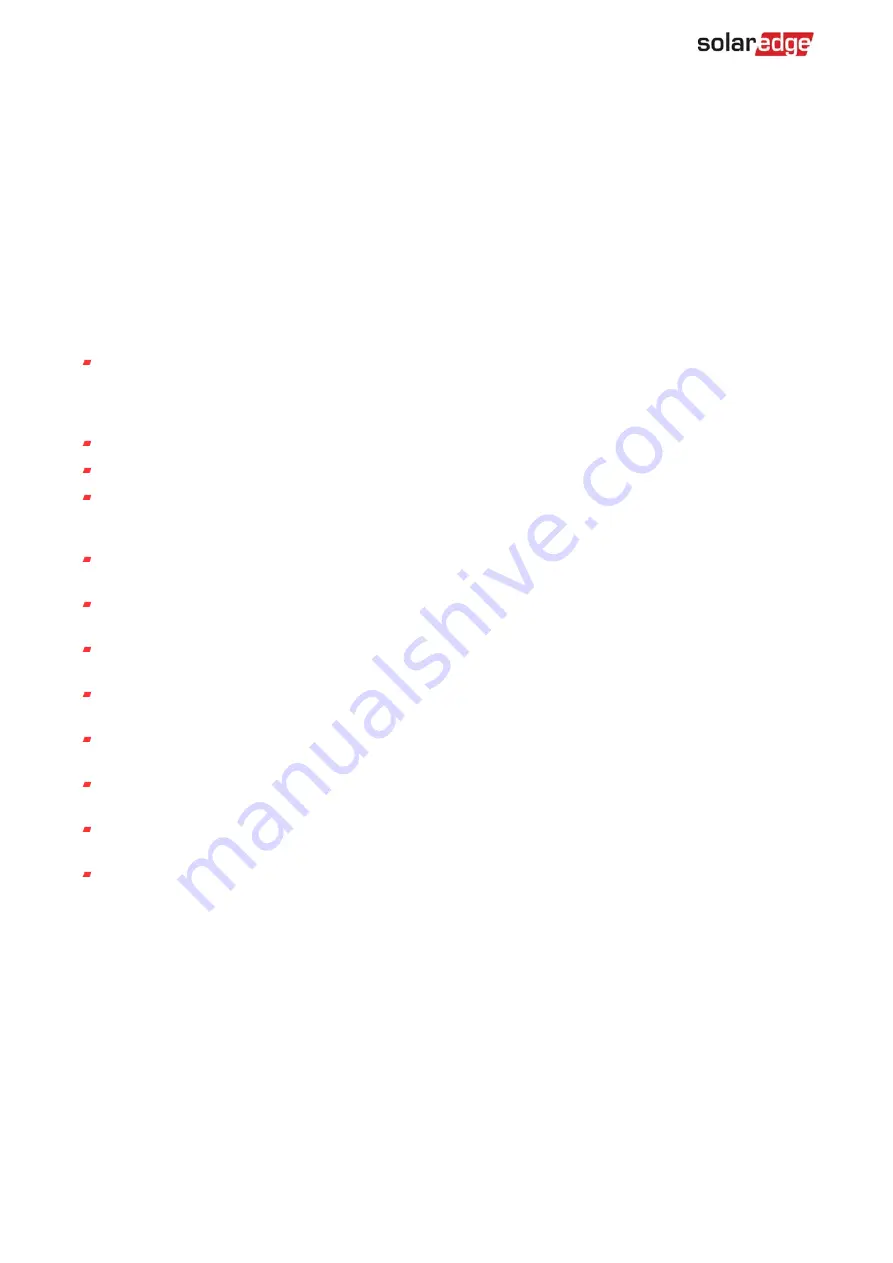
10
Mechanical Installation
PV Module Monocrystalline Bi-Facial Module Installation Guide
SolarEdge modules connected in strings should be installed with the same orientation and tilt angle. Different orientations
and tilt angles may result in different amounts of received solar irradiation and a consequent loss of output power. To
achieve the maximum annual generating capacity, the optimal orientation and inclination of PV modules in the installed
area should be selected to ensure that sunlight can still strike the modules even on the shortest day of the year.
If SolarEdge modules are used in an off-grid system, the tilt angle should be calculated based on seasons and irradiation to
maximize the output power. If the module's output power meets the acquired load under the period of the worst
irradiation in the year, the modules should be able to meet the load for the whole year. If the SolarEdge modules are used
in a grid-connected system, the tilt angle should be calculated based on the principle to maximize the yearly output
power.
Mechanical Installation
Regular Requirements
Make sure that the module installation mode and bracketing system can meet the expected load, which is the
requisite assurance that the bracket installer must provide. The installation bracketing system shall be tested and
inspected by a third-party testing organization with static mechanical analysis capacity as per local national standards
or international standards.
Module bracket shall be made from durable, corrosion-resistant, UV-proof materials.
Modules shall be fixed on the bracket solidly.
Use higher brackets in places with heavy snow accumulation so the lowest point of modules will not be covered by
snow for any length of time. In addition, make the lowest point of modules high enough to avoid being shaded by
surrounding vegetation and woods or reduce the possibility of damage caused by sand and stones.
If modules are installed on brackets parallel to the roof or wall, the minimum gap between the module frame and the
roof/wall shall be 10cm for air ventilation to prevent module wire damage.
Make sure the building is suitable for installation before installing modules on the roof. Moreover, seal properly to
prevent leakage.
The module frames can experience thermal expansion and contraction so the frame interval between two adjoining
modules must be no less than 10mm.
Make sure that the module's back sheet does not come into contact with any brackets or building structures that can
pierce the inside of a module, especially when the module surface is placed under load.
The maximum static load of the PV module is a downforce of 5400pa and an uplift force of 2400pa, which can vary
between different modules.
mounting methods (please refer to the following installation guidance), the described load in this manual is for the
test load.
Note: based on IEC61215 - 2016 installation requirements, when calculating the corresponding maximum design load,
you need to consider a safety factor of 1.5 times.
Modules can be installed horizontally or vertically. When installing the components, be careful not to block the
frame's drain hole.
Summary of Contents for PV530-R72LGML
Page 20: ......






































